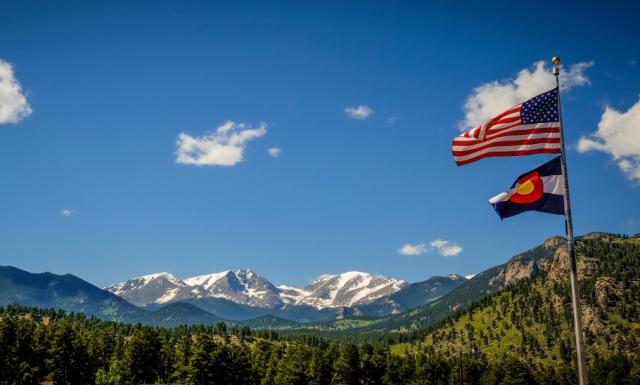
The politics of hydraulic fracturing can change easily these days, so much so that plans for an election can slide off a ballot.
Welcome to Colorado, a state where oil and gas interests and environmental passion can be as discordant as a Mahler symphony. But at least for now, a big chilling chord has been quelled.
As environmental groups were steadfastly collecting signatures to put anti-fracking measures on the November ballot, Gov. John Hickenlooper and his allies were forging a deal to keep the matter election-free. The governor prevailed.
Hickenlooper convinced environmentalists to settle for the creation of an 18-member task force that, in the governor’s words, would be “charged with crafting recommendations to help minimize land-use conflicts that can occur when siting oil and gas facilities near homes, schools, businesses and recreational areas.”
All of this happened on August 4. That was the deadline for environmentalists, led by the group Coloradans for Safe and Clean Energy, to collect enough signatures to put anti-fracking initiatives before the voters on November 4.
It’s not a coincidence that Hickenlooper, a Democrat who favors oil and gas development in his state, was scrambling to keep the anti-fracking measures off the ballot. The potential results could have swelled into an irritating blister for the industry. After all, some Colorado voters have already defeated fracking at the ballot box.
Six municipal referendums about fracking have been held so far. Voters have approved drilling limitations in five of six cities. Loveland is the only municipality to turn down an anti-fracking moratorium. More than 20,000 ballots were cast on July 22, and the initiative failed by roughly 900 votes.
Voters in Boulder, Fort Collins, Broomfield, Lafayette and Longmont approved fracking limits in their communities. The Longmont election was challenged in court by the Colorado Oil & Gas Association (COGA), and the end result was a win for the industry. Colorado District Court Judge Dolores Mallard ruled on July 24 that only state government, not municipalities, has the authority to impose a ban on fracking. The judge also overturned a ban on the storage and disposal of fracking waste within city limits.
Fracking opponents have already appealed and their lawyers have said they will push the issue up the judicial ladder as far as necessary, including to the Supreme Court. COGA returned serve by legally challenging election outcomes in Fort Collins and Lafayette.
In an attempt to achieve détente, the governor has asked COGA to dismiss its lawsuits and other parties to drop anti-fracking ballot initiatives. U.S. Rep. Jared Polis, D- Boulder, the driving congressional force behind the anti-fracking movement, helped to partly calm a torrent of division when he embraced the governor’s proposal.
But I’m willing to bet that this cease-fire will not be longstanding.
Don’t expect Coloradans for Safe and Clean Energy, or groups such as Frack Free Colorado, to go away anytime soon. Statewide petition drives have gathered more than enough signatures to put Initiatives 88 and 89 on the November ballot. Initiative 88 addresses setback standards and Initiative 89 proposes a so-called environmental bill of rights. The group collected 141,000 signatures on Initiative 88 and 120,000 signatures on Initiative 89, the Denver Post reported.
While it’s clear that successful petitions do not always translate into election victories, it’s not a reach to conclude that Colorado’s anti-fracking drive is not desperately dangling from Pikes Peak. It’s not practical to think that fracking opposition will plunge into an abyss and never be heard from again.
On the industry side, millions of dollars are available to battle opponents. Anadarko Petroleum Corp. (NYSE: APC), Whiting Petroleum Corp. (NYSE: WLL) and Encana Corp. (NYSE, TO: ECA), which are all producing in the Denver-Julesburg Basin, have said that they are willing to spend $50 million to fight the anti-fracking measures. And there’s this: Those who oppose fracking cannot dismiss job opportunities and the economic windfall that oil and gas creates. Add to that the emergence of energy independence and you have an industry that simply cannot be, and should not be, dismissed.
So where does that leave Hickenlooper and his 18-person panel? Undoubtedly, they are in a tough position. But a good portion of the answer involves creating setback standards that communities and the industry can live with. Fracking sites are like old friends we don’t see too often. The more they’re out of sight, they more they’re out of mind.
Recommended Reading
Dividends Declared Week of Jan. 13
2025-01-17 - With 2024 year-end earnings season underway, here is a compilation of dividends declared from select upstream, midstream and downstream companies.
Artificial Lift Firm Flowco’s Stock Surges 23% in First-Day Trading
2025-01-17 - Shares for artificial lift specialist Flowco Holdings spiked 23% in their first day of trading. Flowco CEO Joe Bob Edwards told Hart Energy that the durability of artificial lift and production optimization stands out in the OFS space.
Velocity Management Invests in Pipeline Builder M Wright Services
2025-01-16 - Velocity Management Advisors has made a minority investment in M Wright Services and three of Velocity’s partners will join the construction firm’s board.
Pearl Again Backs Williston E&P Eagle Mountain Energy Partners
2025-01-16 - Private equity firm Pearl Energy Partners will back Eagle Mountain Energy Partners II, which last year exited its Williston Basin assets in a nearly $300 million deal with TXO Partners.
BP Cuts Over 5% of Workforce to Reduce Costs
2025-01-16 - BP will cut over 5% of its global workforce as part of efforts to reduce costs and rebuild investor confidence.
Comments
Add new comment
This conversation is moderated according to Hart Energy community rules. Please read the rules before joining the discussion. If you’re experiencing any technical problems, please contact our customer care team.




